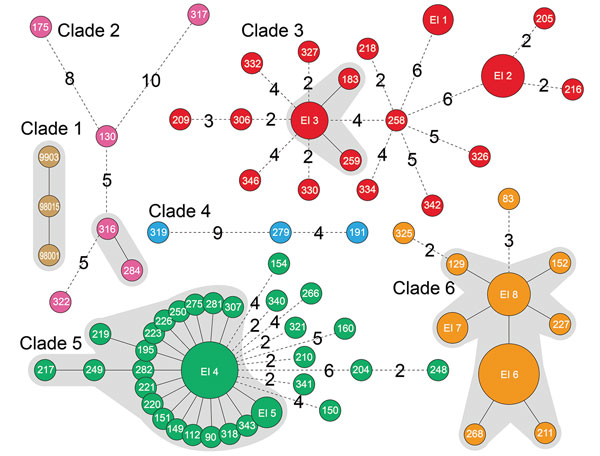Volume 23, Number 2—February 2017
Research
Detection of Multiple Parallel Transmission Outbreak of Streptococcus suis Human Infection by Use of Genome Epidemiology, China, 2005
Figure 2

Figure 2. Minimum spanning tree of 6 clades of Streptococcus suis minimum core genome type 1 sequence type 7 implicated in outbreak of human infections, Sichuan Province, China, 2005. Solid black lines indicate only 1 single-nucleotide polymorphism between the 2 isolates. Differences of >1 SNP between isolates are displayed by dashed black lines with numbers. Numbers in circles are names of isolates. Epidemiologically interesting (EI) group 1: SC261 and SC264; EI 2: SC202, SC212, SC214, and SC328; EI 3: SC256, SC260, and SC331; EI 4: SC89, SC222, SC224, SC276, SC308, SC329, and SC357; EI 5: SC153 and SC311; EI 6: SC3, SC5, SC7, SC22, SC39, SC50, SC304, and SC338; EI 7: SC16 and SC17; EI 8: SC69, SC84, SC179, and SC333.
1These authors contributed equally to this article.